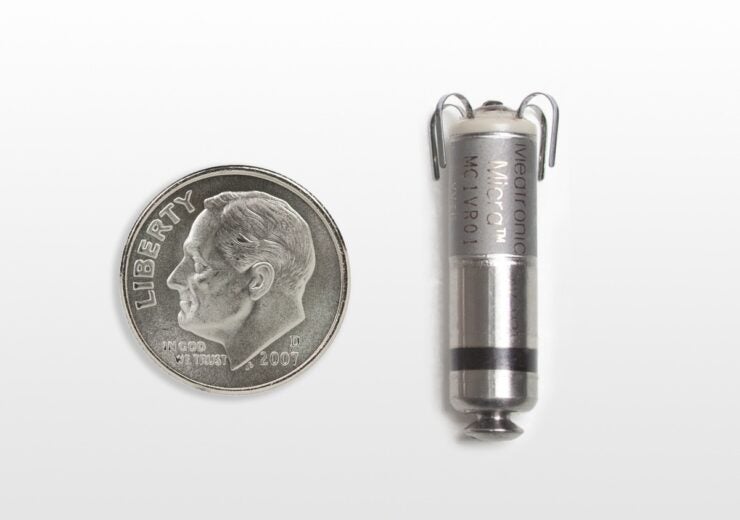Micra AV2 and Micra VR2 provide enhanced battery life and easier programming than the previous generation of Micra pacemakers, while delivering several benefits of leadless pacing, such as reduced complications, compared to traditional pacemakers

Medtronic Micra leadless pacemakers and Dime. (Credit: Medtronic plc)
Healthcare technology company Medtronic has received the CE mark for its next-generation miniature, leadless pacemakers, Micra AV2 and Micra VR2.
Micra AV2 and Micra VR2 are said to be the world’s smallest pacemakers that provide enhanced battery life and easier programming than the previous generation of Micra pacemakers.
Also, the next-gen Micra devices will deliver several benefits of leadless pacing, such as reduced complications, compared to traditional pacemakers, said the medical device maker.
The CE mark approval follows the US Food and Drug Administration approval for the Micra AV2 and VR2 pacemakers last year.
Medtronic cardiac pacing therapies general manager Robert Kowal said: “For more than eight years, our Micra leadless pacemakers have provided meaningful benefits to people in Europe who require a pacemaker.
“Now, these patients have access to the latest leadless pacing technology that, for most of them, may be the only device they will ever need.”
Medtronic estimates that the battery life of Micra AV2 and Micra VR2 will be nearly 16 and 17 years, respectively, with around 40% more battery life than previous generations.
Unlike traditional pacemakers, Micra devices are less than one-tenth the size of traditional pacemakers and do not require leads or a surgical pocket under the skin.
In addition to size and longevity benefits, Micra devices are the only leadless pacemakers with remote monitoring capabilities.
Also, the next-gen pacemakers allow doctors to check on a patient’s heart device without needing the patient to visit a clinic, reducing hospitalisation and increasing security.
University Hospitals of Leuven cardiologist Christophe Garweg said: “The first generation of leadless Micra pacemakers demonstrated a significant reduction in major complications.
“This next generation of Micra brings several additional benefits, including greater longevity, and specifically for the Micra AV2, new algorithms to optimise AV synchrony at faster heart rates while requiring less in-office programming.
“These advantages likely will expand the use of the leadless pacemaker to more patients.”
